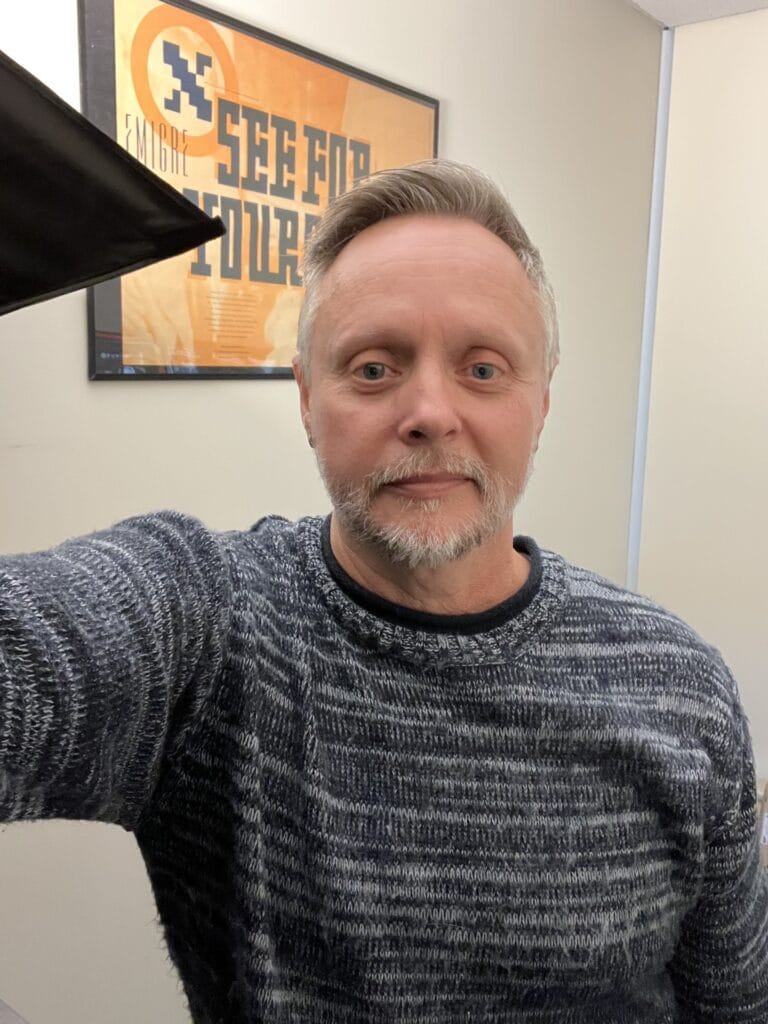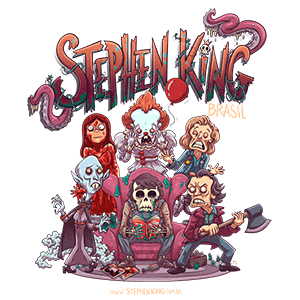Roger Cropley ll
He is the editor of David Jester‘s One for the Road Dollar Baby film.
SKSM: May you introduce yourself to our readers?
Roger Cropley II: I’m a freelance editor from Maine with over 30 years of Editorial Experience. I have edited everything from news, to commercials, to DIY programming, and more recently, features and shorts. I started as an assistant back in the early 90’s when commercials were still mainly shot on film, Beta SP was the preferred tape format and digital editorial was just beginning to take hold. In fact , I worked on the AVID Media Composer way back when it’s resolution was called AVR1 and it was worse than watching a bad vhs tape. Of course, it was just meant to be offline at the time, so it served it’s purpose of speeding up the editorial process.
SKSM: What is a typical day like for you as a video editor?
Roger Cropley II: A typical editorial day for me can be a lot of things but since we’re here because of the short One for the Road, I’ll talk about that process. I would start by watching all the material for the scene or scenes that I was going to be working on. I’d make some hand written notes about takes I liked. Use timeline markers to mark those as well and to mark facial expressions, looks, anything I think might work to add to the edit. Then I’d assemble my first cut based on the script. From there the whole process is just refining and refining some more until it flows and just feels right. How do you know when that is? Practice and experimentation. I view editorial in 2 different ways. One, it’s a puzzle and it’s my job to fit all the pieces together to make a beautiful picture. And though I have a guide, I don’t necessarily have to use all the pieces or even put them together as originally thought. Two, it’s like visual music. It has a rhythm, a style, a flow. And that is all determined by the visuals and the performances. I always edit scenes dry and what I mean by that is without music or even a click track. I don’t want anything influencing my decisions except for the material itself.
SKSM: How did you become involved in One for the Road Dollar Baby film?
Roger Cropley II: I became involved in the project kinda by accident. I was on a flight to California to wrap up the editorial of a feature I was working on. David Jester sat down in the same row. He pulled out his laptop and began typing away. When I looked over I saw that it was a script, so I asked him about it. We struck up a conversation and it turned into me landing the job of editor on his film.
SKSM: Can you tell us about your work in the film?
Roger Cropley II: As for my work on this film, I was the editor, the sound designer, the colorist. If it was part of post, that’s what I did. It was really great experience, David Jester trusted me and I put my all into the editorial and I think it came out pretty good. I’m proud of it.
SKSM: What was the most difficult part of editing on One for the Road?
Roger Cropley II: I think the most difficult part of the edit, and it’s the same for almost every edit, is cutting things that you like out. Whether that be a full scene or just a few lines. Because every change leads to other changes. I read once that someone said “A film is never done. It’s just taken away.” And that’s true. Even when you look back at things months or years later you still think. I should have done this or I could have done that.
SKSM: What was it like to work with David Jester on this film?
Roger Cropley II: Working with David was a joy. He had a vision. He was able to articulate it to me as well as the actors and crew. So they captured his vision, and he allowed me to interpret it and build upon it. Of course, editing is always a collaborative effort with the director and the goal is to help them realize their vision, which I think we achieved.
SKSM: What is your favorite video editing software?
Roger Cropley II: I’ve worked on projects that have edited in Adobe Premiere, DaVinci Resolve, Final Cut and AVID Media Composer and I have to say that my favorite for shorts or features is AVID. It’s media management tools and workflow make the process of long-form flawless. For commercials, I’d say it’s Resolve. The key to editing software is to use whatever you feel most comfortable in. It may seem scary to jump around but really they all work in similar ways and can be easily learned. However, if your goal is to edit features, learn the AVID. It is still the standard in feature film editorial.
SKSM: How do you maintain order when managing multiple tasks at once?
Roger Cropley II: As for maintaining order in an edit, it’s all about prep work or how you set up the project and all the additional material like music, Visual Effects, sound effects, etc. that come in during the process. Each editor has their own way of doing this. My way works for me, but it may not for another editor. If you organize on the front end, everything you have to do during post will flow.
SKSM: What are you working on nowadays?
Roger Cropley II: Currently, I’m working mostly on commercials. The last feature I edited Dangerous Waters is now streaming on HULU and hopefully soon I’ll land another short or feature because that’s the type of editing I really love.
SKSM: Thanks for taking the time to answer my questions. Something you’d like to tell our readers?
Roger Cropley II: Thanks for the opportunity to do the interview.

















